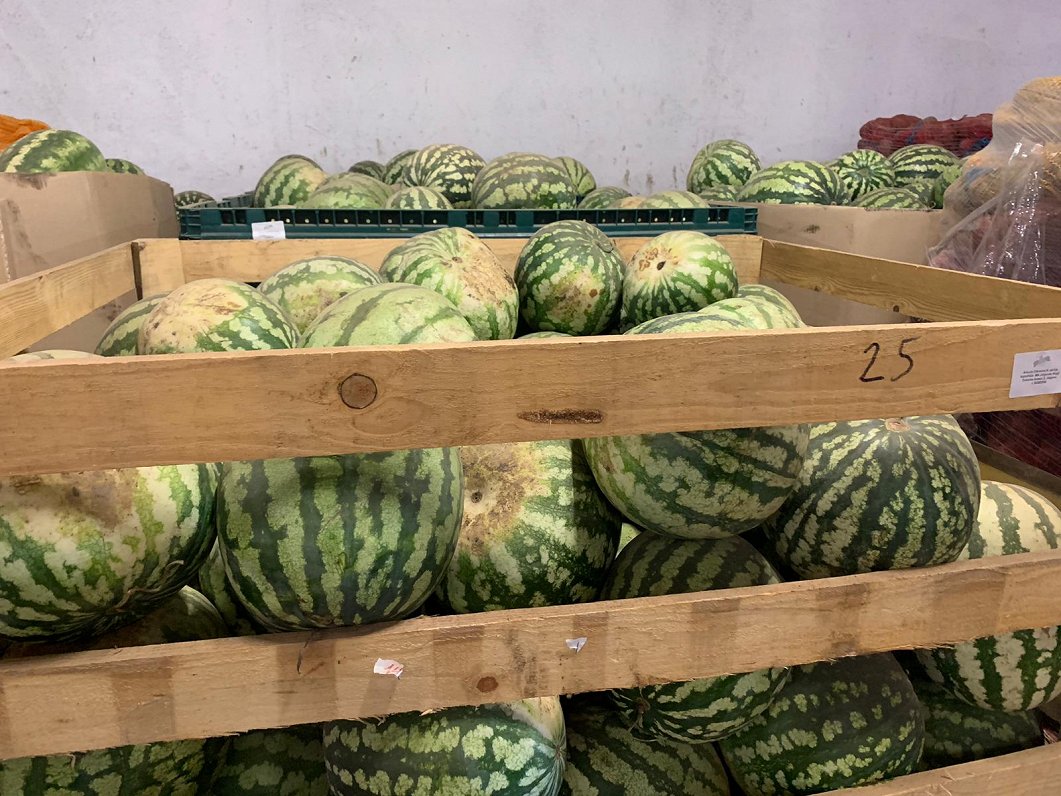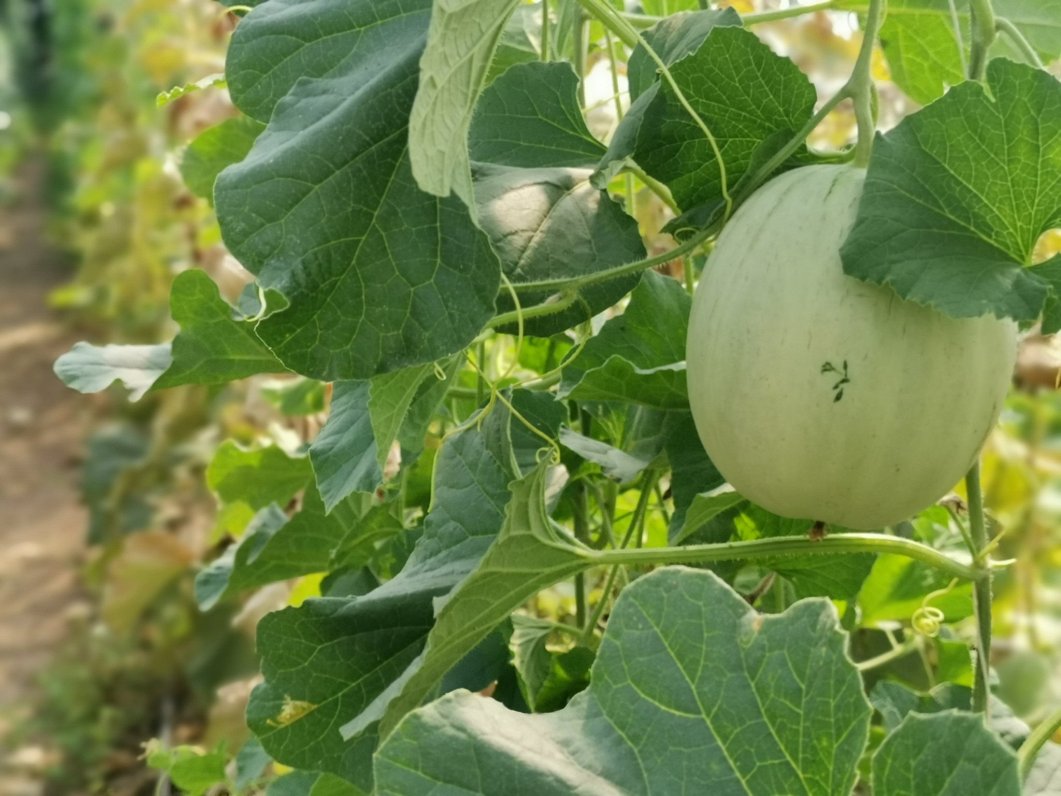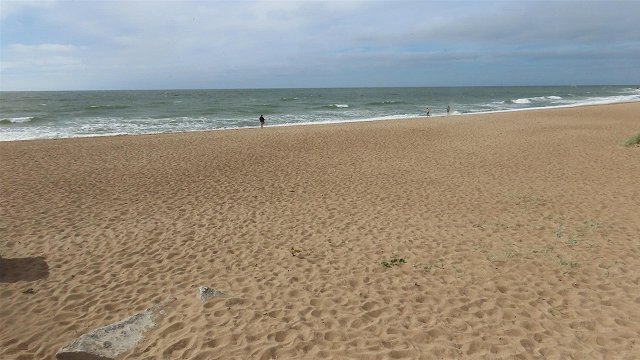“The largest, I think, was 17 kilograms. It's grown out on the field. Weather conditions - that's what it all depends on. They can also be very large, but it depends on variety,” said Kaspars Otikovs, who has been cultivating watermelons in Dobeles municipality in his biological farm alongside tomatoes for seven years. This year has been favorable for watermelon cultivation and Otikovs said that demand for local watermelons is also high annually.
“The early varieties will be with thinner peel, the late ones will have a thicker one. The early ones can break faster, they can't, for example, be harvested and put in the basement. Then they are so sweet, watery. Those with the thick peel can stand for a long time, I think even a month. You need experience in all things, you need to work your way in,” Otikovs said.
He said that although harvests can be great, it is risky to grow melons and watermelons commercially in Latvia. “The bird problem is huge, they peck. The other [problem] is wet summers. Wet, cold summers, then the harvests are very small. In very large areas,I don't know if it would pay off,” said Otikovs.
Also Tatjana Ābeltiņa, owner of Zaķumuiža farm near Gulbene, said the harvest of watermelons this year would be good. Because of the cool spring watermelons started growing on this farm only in June, so Ābeltiņa is currently growing more of the late varieties, which will be ripened only in September.
“This year (..) summer is just perfect for growing watermelon. [..] Just the supply can't compete with demand because really the demand for our own watermelon is very high. [..] There are very sharp weather changes in the Gulbene area, so the weather conditions are those that introduce adjustments to why we do not grow watermelons in a larger scale. ”
Although more and more watermelons are grown in Latvia and local harvests can be purchased, growers conclude that it is still an exotic crop in our agriculture that is very dependent on specific weather conditions.





























